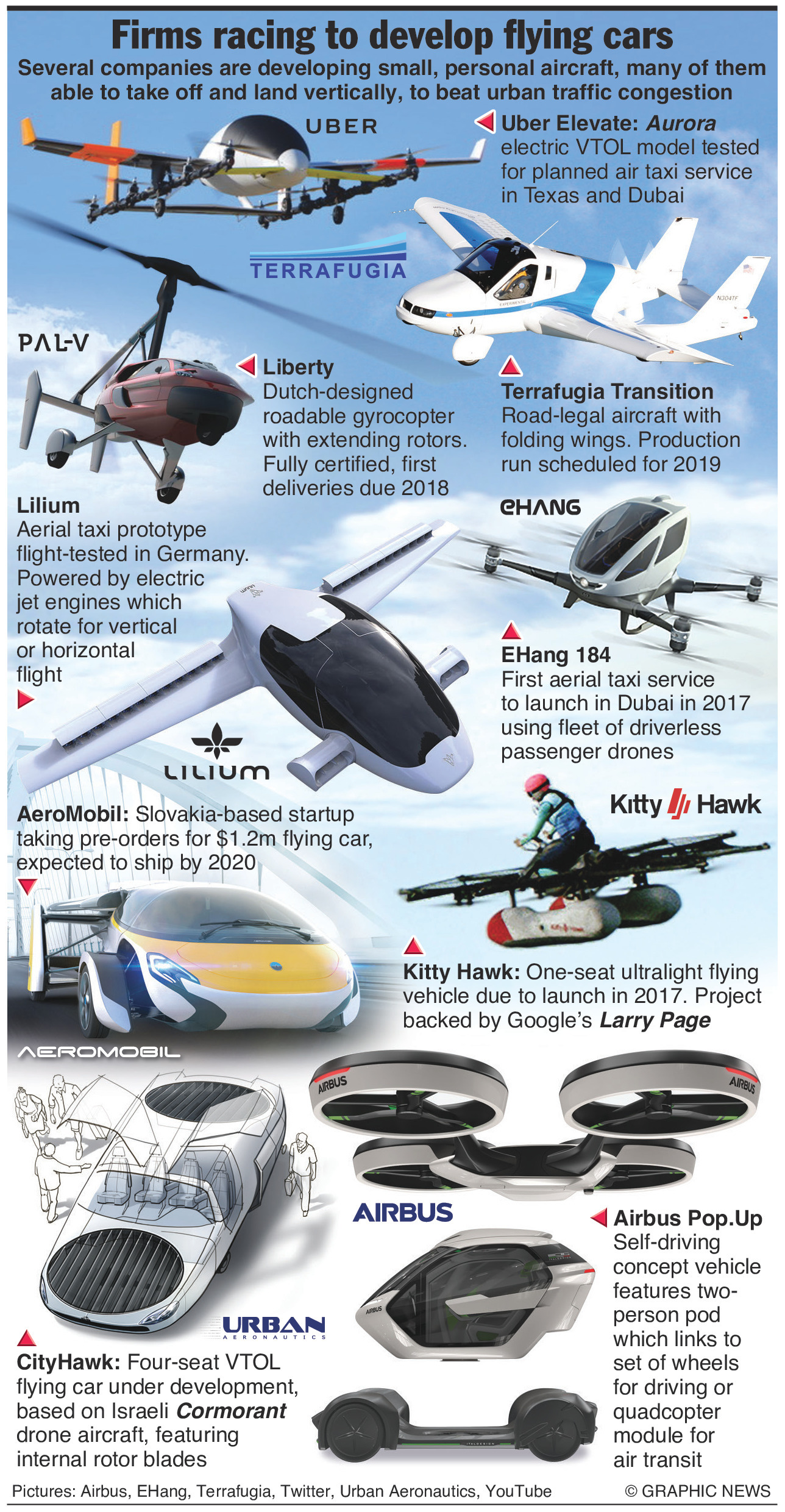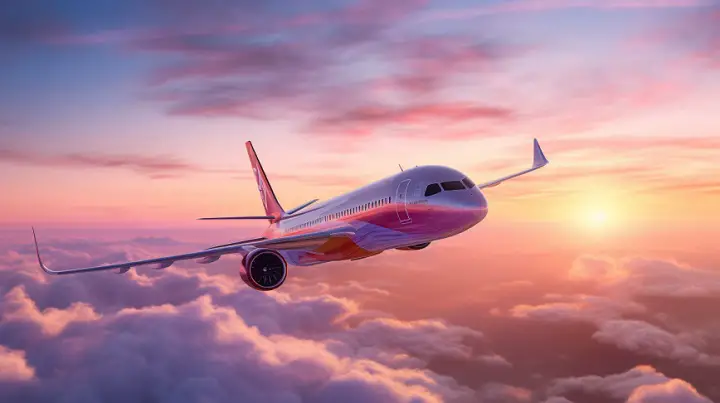
Role of Flying Cars in Sustainable Mobility
Flying cars, also known as air taxis, have the potential to revolutionize transportation and play a key role in sustainable mobility. As urban populations grow and road congestion worsens, flying cars offer a solution for faster and more efficient travel around cities. In recent years, companies like Lilium, Joby Aviation, and Archer have been developing electric flying car prototypes and aiming to launch commercial air taxi services.
While flying cars could provide benefits, they also raise questions around safety, regulation, infrastructure needs, and environmental sustainability. This article will examine the current state of flying car technology, the potential benefits and challenges of widespread adoption, and their possible role in a sustainable mobility future.
Current State of Flying Car Technology
Main Designs and Innovations
There are two main designs for flying cars under development:
- Multicopter vehicles – These have multiple rotors and propellers like a helicopter, allowing vertical takeoff and landing. Companies like Volocopter, Ehang, and Joby Aviation are developing multicopter air taxis.
- Tilt-rotor vehicles – These have rotors that can tilt from vertical for takeoff to horizontal for forward flight like a plane. Examples include Lilium’s 5-seater jet and Bell’s Nexus air taxi.
Some innovations in flying car technology include:
- Transitioning from gasoline to all-electric power to reduce emissions.
- Tilting rotors for increased efficiency in both vertical and horizontal flight.
- Autonomous flight control systems for easier piloting.
- No exposed rotors for increased safety.
- Higher capacity for up to 5 passengers to improve economics.
Test Flights and Commercialization Timelines
Most flying car companies aim to launch commercial services between 2024 and 2028. To reach this goal, they have been conducting rigorous flight testing programs:
- Joby Aviation has completed over 1,000 test flights with its 5-seat multicopter air taxi. They aim to launch services in 2024.
- Lilium has tested its 5-seat jet prototype and plans to start regional operations in Florida in 2025.
- Archer flew a full-scale model of its Maker eVTOL air taxi in 2021. It’s targeting commercial operations in 2024 in Los Angeles.
- Volocopter conducted its first crewed test flight in Singapore in 2019 and aims to launch public flights in the next few years.
- Ehang become the first company to get a permit to test passenger flights in China and has carried out over 2,000 test flights. They’re aiming for 2025 commercialization.
While technical challenges remain, rapid progress suggests short-range flying car services could become a reality in major cities over the next 5 years.
Benefits of Flying Cars
Faster Point-to-Point Urban Travel
Flying cars can significantly reduce travel times, especially over long distances across congested megacities. For example, a flying car trip from San Francisco Airport to downtown San Jose would take around 15 minutes, versus over an hour by car. This enables faster regional connectivity.
Reduced Traffic Congestion
By taking vehicles off crowded roads and opening up air transit lanes, flying cars can help alleviate urban traffic congestion. Companies estimate that for just 5% of city travelers to use air taxis, road congestion could reduce by 10% or more.
Convenience and Flexible Routings
Travellers can hail flying cars on-demand using a smartphone app and fly direct to their destination without following fixed ground transport routes. This offers greater convenience and flexibility.
Potential Affordability
Manufacturers are targeting operating costs equivalent to Uber or taxi services to make flying cars price-competitive with ground transport options. With mass production, they aim to lower costs further.
Challenges and Concerns Around Flying Cars
Infrastructure Needs
Widespread flying car services would require extensive infrastructure:
- Vertiports: Small, elevated landing pads distributed around cities for takeoff and landing. This new transport hub infrastructure will require significant investment.
- Charging stations: A network of high-powered charging stations for electric flying cars would need to be built.
- Air traffic management: Advanced air traffic control systems will be needed to manage flying car routings and prevent mid-air collisions. New regulatory frameworks will also be required.
Public Acceptance Issues
Safety concerns around failure hazards, noise pollution, and visual pollution may reduce public acceptance of flying cars operating over urban areas.
Safety and Regulatory Hurdles
Strict safety certification procedures, pilot training requirements, and airspace regulations will need to be developed to ensure safe mainstream deployment. This may delay rapid roll-outs.
Limited Passenger and Cargo Capacities
Most flying cars in development seat 4-6 passengers with limited cargo capabilities. Therefore, their capacity will remain lower compared to trains, buses, hyperloops, or other mass transit modes.
Environmental Sustainability
Energy Use and Emissions
Flying cars have the advantage of using clean electric propulsion versus jet fuel, reducing greenhouse gas emissions. However, the high energy-consumption during vertical takeoff and landing versus efficient forward flight remains a challenge. More renewable energy will be needed to fully decarbonize their operations. Energy storage limitations may also restrict flight range or payload capacities.
Noise Pollution Concerns
The noise emitted during takeoff and landing cycles may make flying cars unsuitable for some urban areas, limiting where vertiports can be built. More research into low-noise rotors and flight paths is required.
Visual Pollution
Some argue extensive flying car services could negatively impact aesthetics and views in cities or increase light pollution at night from vertiports.
Manufacturing Emissions
While flying cars will have lower operational emissions, the emissions from manufacturing their batteries and advanced components may be high. More research is needed to optimize sustainability across the full product life-cycle.
Comparison to Other Transport Modes
Flying Cars Vs Traditional Cars
Flying cars would help overcome gridlock and high emissions from traditional gasoline-powered cars. However, their higher cost and energy use may limit adoption in less dense cities or for shorter trips.
Flying Cars Vs Public Transit
Systems like metros, light rail, and bus rapid transit can move higher passenger volumes with greater energy efficiency. But flying cars provide more flexibility and can cover routes that lack ground infrastructure. A balanced mix of the two may emerge in cities.
Flying Cars Vs High-Speed Rail
Over long distances of 100+ miles, high-speed rail has advantages in capacity, energy-efficiency, and passenger comfort versus flying cars. But for shorter urban trips, air taxis can be faster and more direct.
Flying Cars Vs Delivery Drones
For lightweight parcel delivery, autonomous drones may have an edge over flying cars in terms of cost and distributed coverage. But flying cars can transport people and heavier cargo payloads.
Role in a Sustainable Mobility Future
Complementing Public Transit Networks
Flying cars serving as “air metro” systems can provide high-speed connectivity between outlying areas and central transit hubs like train stations or airports. They can boost the reach and accessibility of existing transit infrastructure.
Linking Regions Within Megacities
In massive cities that span hundreds of kilometers like Shanghai or São Paulo, flying cars could provide rapid cross-city mobility between business districts decentralized across the region.
Reducing Short Haul Flights
Flying cars could replace some short 1-2 hour airline flights to nearby destinations. This reduces jet fuel use and airport congestion.
Providing On-Demand Mobility in Smaller Cities
In low-density cities less suited to fixed public transit, flying cars can offer more convenient point-to-point travel while avoiding traffic.
Transporting Goods and Medical Deliveries
The cargo capacity of flying cars, while limited, may help reduce truck deliveries. Time-sensitive medical deliveries like donor organs could also benefit from air transport.
Challenges to Optimize
To maximize sustainability benefits, key factors like vehicle emissions, noise, infrastructure land use, and fair access to services across income levels will need careful management. A mix of air, ground, and public transit tailored to each city will be optimal.
Conclusion
Flying cars have the potential to revolutionize urban mobility in the coming decade if technical, safety, and infrastructure challenges can be addressed. While not a complete solution, they can play a role in reducing emissions, congestion, and travel times in cities if integrated well with public transit networks and other sustainable mobility options. Continued progress in electric propulsion, autonomy, and air traffic management will help overcome current limitations around capacity, noise, and energy use. If stakeholders collaborate closely on responsible policy and smart city integration, flying cars may deliver important sustainability and social benefits. But a balanced mix of transport modes tailored to each city will remain essential.
Frequently Asked Questions
How much will flying cars cost?
Likely a similar amount to an Uber or taxi ride per mile initially. Prices are estimated to be around $3-6 per passenger mile. As volumes increase and manufacturing scales up, costs could come down to around $1-2 per mile, comparable to owning and operating a traditional car.
When can I ride in a flying car?
Most companies are targeting commercial launch dates between 2024 and 2028 for urban air taxi services, starting in cities like Los Angeles, Singapore, Dubai, and Shanghai with adequate infrastructure. Widespread availability in all major cities likely won’t occur until the 2030s or 2040s.
Are flying cars safe?
Manufacturers emphasize that meeting highest safety standards is their top priority. Extensive redundancies, backup systems, parachutes, and rigorous testing aim to make failure risk negligible. Advanced air traffic management will also help avoid collisions. But convincing the public of their safety will take time.
How will weather impact flying cars?
Flying cars are designed to handle normal rain and wind conditions. But excessive fog, snow, hail, or storms may temporarily restrict operations, similar to airplanes.
Will flying cars be accessible to everyone?
Developers aim to make flying cars affordable for the average person. But initially, costs may restrict flights to wealthier travelers and business users. As with most new technologies, it may take time for benefits to reach all income levels through lowering fares, aiding transit connections, and equitable policy.
Do we have enough pilots to operate flying cars?
Companies are designing flying cars to be autonomous or easy to operate without piloting skills needed. Some visions involve distributed fleets of flying cars providing “air taxi” services on-demand, rather than vehicles owned by individuals. So extensive pilot training may not be required.
How will flying cars get regulatory approval?
Manufacturers will need to meet stringent aviation safety standards set by bodies like the FAA in the US and EASA in Europe. Specific airspace regulations, licencing frameworks, and traffic management rules for flying cars will also need development through public-private partnerships between regulators and companies.
What happens if a flying car’s batteries run out?
Flying cars are designed with reserve battery capacity to land safely at vertiports to recharge or swap batteries. Advancements in fast charging and high-density batteries will provide greater reserves. Parachute systems also allow emergency landings if total power failure occurs in flight.
Will flying cars work with 5G networks?
Future flying car operations will depend on advanced networks like 5G or 6G to manage traffic, transmit flight data, and provide connectivity during flights. The high speeds and low latency of these networks will be critical for safe coordination.
How does weather radar detect flying cars?
Flying cars contain transponders that continuously transmit their GPS position to air traffic controllers and ground radar systems. As densities increase, additional detection technologies like LIDAR may be added. This allows real-time weather and congestion monitoring to guide safe efficient routing.







